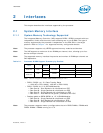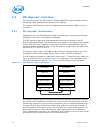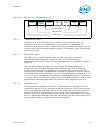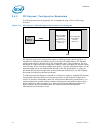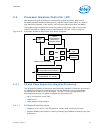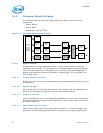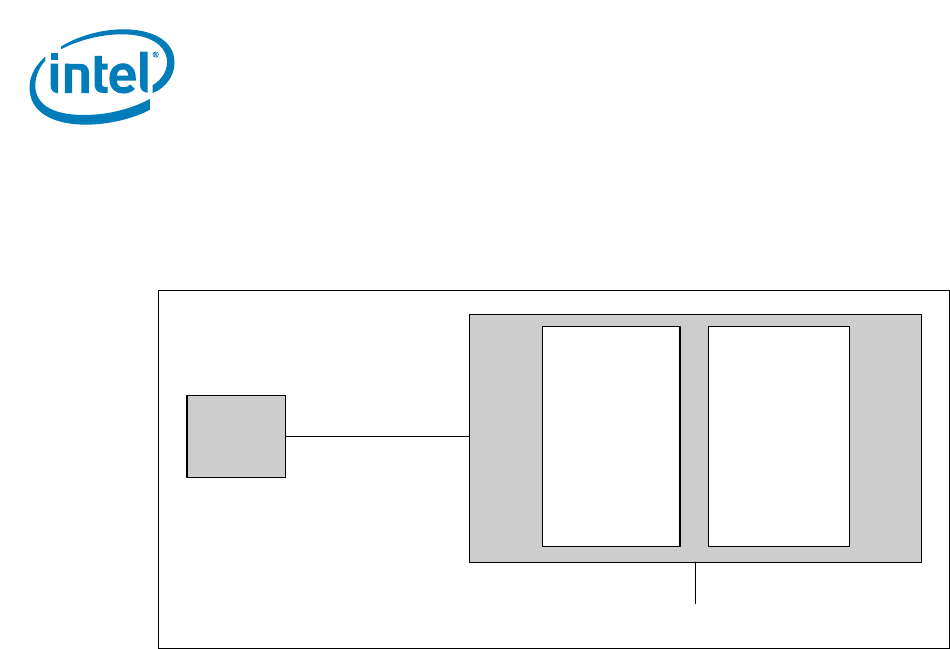
Interfaces
30 Datasheet, Volume 1
2.2.2 PCI Express* Configuration Mechanism
The PCI Express (external graphics) link is mapped through a PCI-to-PCI bridge
structure.
PCI Express extends the configuration space to 4096 bytes per-device/function, as
compared to 256 bytes allowed by the Conventional PCI Specification. PCI Express
configuration space is divided into a PCI-compatible region (that consists of the first
256 bytes of a logical device's configuration space) and an extended PCI Express region
(that consists of the remaining configuration space). The PCI-compatible region can be
accessed using either the mechanisms defined in the PCI specification or using the
enhanced PCI Express configuration access mechanism described in the PCI Express
Enhanced Configuration Mechanism section.
The PCI Express Host Bridge is required to translate the memory-mapped PCI Express
configuration space accesses from the host processor to PCI Express configuration
cycles. To maintain compatibility with PCI configuration addressing mechanisms, it is
recommended that system software access the enhanced configuration space using
32-bit operations (32-bit aligned) only. See the PCI Express Base Specification for
details of both the PCI-compatible and PCI Express Enhanced configuration
mechanisms and transaction rules.
Figure 2-4. PCI Express* Related Register Structures in the Processor
PCI-PCI Bridge
representing
root PCI
Express* ports
(Device 1 and
Device 6)
PCI Compatible
Host Bridge
Device
(Device 0)
PCI
Express*
Device
PEG0
DMI




